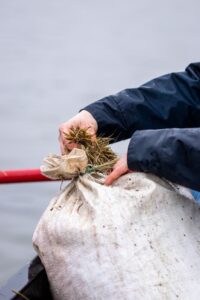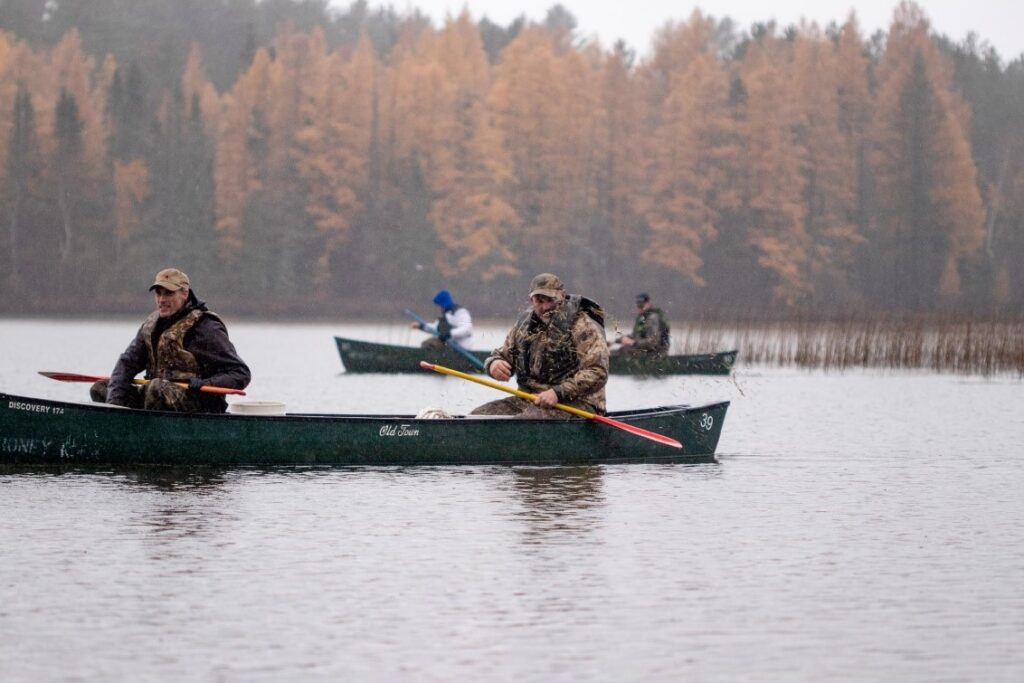 By Anna Rzchowski, Public Lands Ecologist – [email]arzchowski@wisducks.org[/email]
By Anna Rzchowski, Public Lands Ecologist – [email]arzchowski@wisducks.org[/email]
This article originally appeared in Wisconsin Waterfowl Association’s December, 2023 Newsletter edition.
Photo Credits: Jennifer from Three Lakes School
 A few weeks ago, I drove up to Carlton, MN for the Manoomin- Psíŋ Knowledge Symposium. The two-day gathering of tribal members, rice enthusiasts, students, and conservationists was full of lively conversation and lots of enthusiasm for wild rice. Panels included ricing stories and knowledge shared by tribal elders, lessons learned from wild rice restorations, and the threats facing wild rice today. It’s exciting to see so much collaboration across organizations and communities working to protect this important species.
A few weeks ago, I drove up to Carlton, MN for the Manoomin- Psíŋ Knowledge Symposium. The two-day gathering of tribal members, rice enthusiasts, students, and conservationists was full of lively conversation and lots of enthusiasm for wild rice. Panels included ricing stories and knowledge shared by tribal elders, lessons learned from wild rice restorations, and the threats facing wild rice today. It’s exciting to see so much collaboration across organizations and communities working to protect this important species.
For many years, WWA has worked to support wetlands and wild rice. Earlier this year, WWA broadened these efforts by contracting with the Wisconsin Department of Natural Resources to restore state wetlands and to expand wild rice across Wisconsin’s Ceded Territories. This year, WWA collected 250 pounds of green rice from a Vilas County lake, which was planted by the DNR at another site the next day. WWA also purchased 1,400 pounds of rice, planted by DNR, WWA and Three Lakes High School on priority sites identified by the DNR and other partners such as the Great Lakes Indian Fish and Wildlife Commission (GLIFWC).

And WWA’s wild rice efforts don’t stop at collection and seeding. Wetland restoration through our public and private lands programs can help to restore hydrology and improve conditions that wild rice needs to thrive, supporting an important resource for humans and waterfowl alike.
